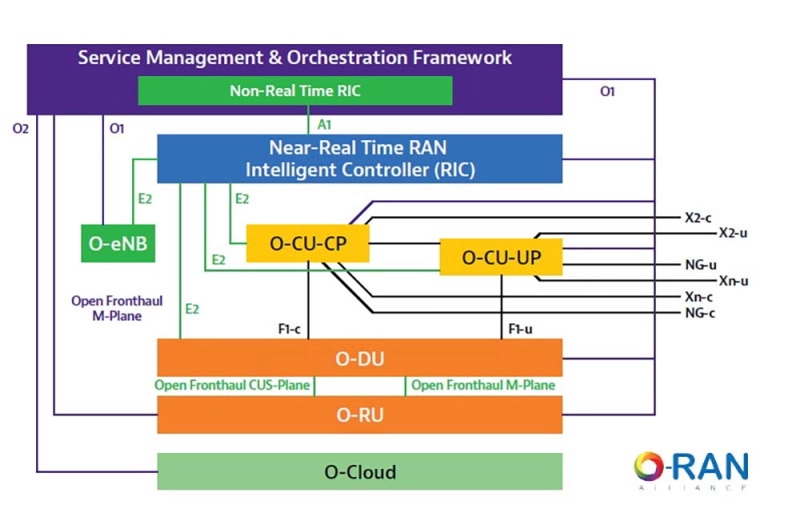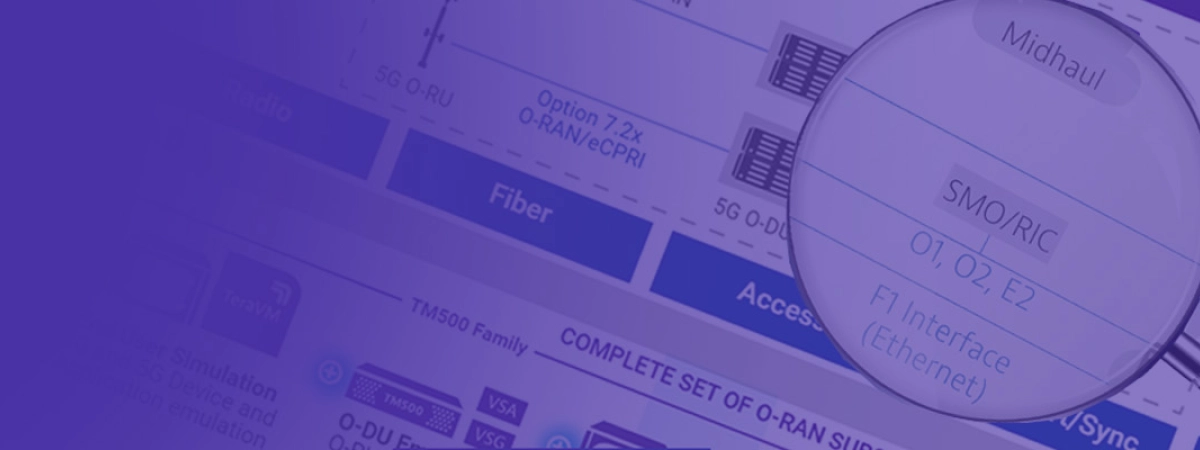RAN Intelligent Controller
Driving down the cost of deploying and operating Open RAN
What is the RIC?

The RIC enables the optimization of RAN resources through near real-time analytic processing and provides adaption recommendations. The RAN intelligent Controller (RIC) is cloud native, and a central component of an open and virtualized RAN network. The RIC is an O-RAN Alliance defined network component that aligns with 3GPP Release 15 and beyond, it supports network slicing, mobile broadband, mission critical communications etc.
It helps operators to optimize and launch new services by allowing them to make the most of network resources. It also helps operators to ease network congestion. RIC stands for RAN Intelligent Controller and is an open platform designed to host RAN control applications (called xApps) which will be developed by specialist software developers – sometimes external to the RIC vendor.
Three objectives of the RIC
- Performance Data
RIC receives a stream of RAN data (counters, KPIs, measurements) which can be analyzed by xApps and AI/ML engines to make RAN optimization decisions - Resource Assurance
Ensure services attain required performance – using handover, modulation changes, prioritisation of RAN resources - Balance and Harmony
Ensure RAN efficiency when many users are battling for scarce resources
Challenges when deploying the RIC
All the messages coming from the RAN into RIC need to go over the E2 interface. However, most developers won’t have a RAN to test the RIC with. They therefore need a way to emulate the RAN traffic scenarios in order to test the functions of the RIC. They also need to be able to test in real time, given that much of the RIC’s functionality is performed in real time or near real time.
Operators need a way to do all of this in a lab environment, before costly network roll-outs and before they then experience troubleshooting problems which could impact the quality of the end user experience.
Solutions
VIAVI is enabling operators to test the RIC and in doing so is helping to expedite the roll-out of open RAN networks and architectures. We’ve developed a means of testing the E2 interface itself, creating the volume and scale of messages that would go across E2 interface in a real-world network scenario. We can also emulate the O-CU and O-DU, as well as the output from the RIC. This is thanks to our developments of TeraVM, which can provide the emulated RAN (the measurements) to the RIC under test and then receive the outputs/decisions from the RIC and modify according to the proposed changes from the RIC. This makes it easy to see if changes improve the RAN efficiency.
Extending the capabilities of TeraVM is just one way that we’re supporting the evolution of networks, and working with operators to ensure easy, cost-effective ways of testing and readying their networks for their subscribers.
Read more about the VIAVI TeraVM AI RSG Tester
Testing the RIC
Showing three aspects of the RIC that need to be tested with a comprehensive tool
WATCH THE DEMO



